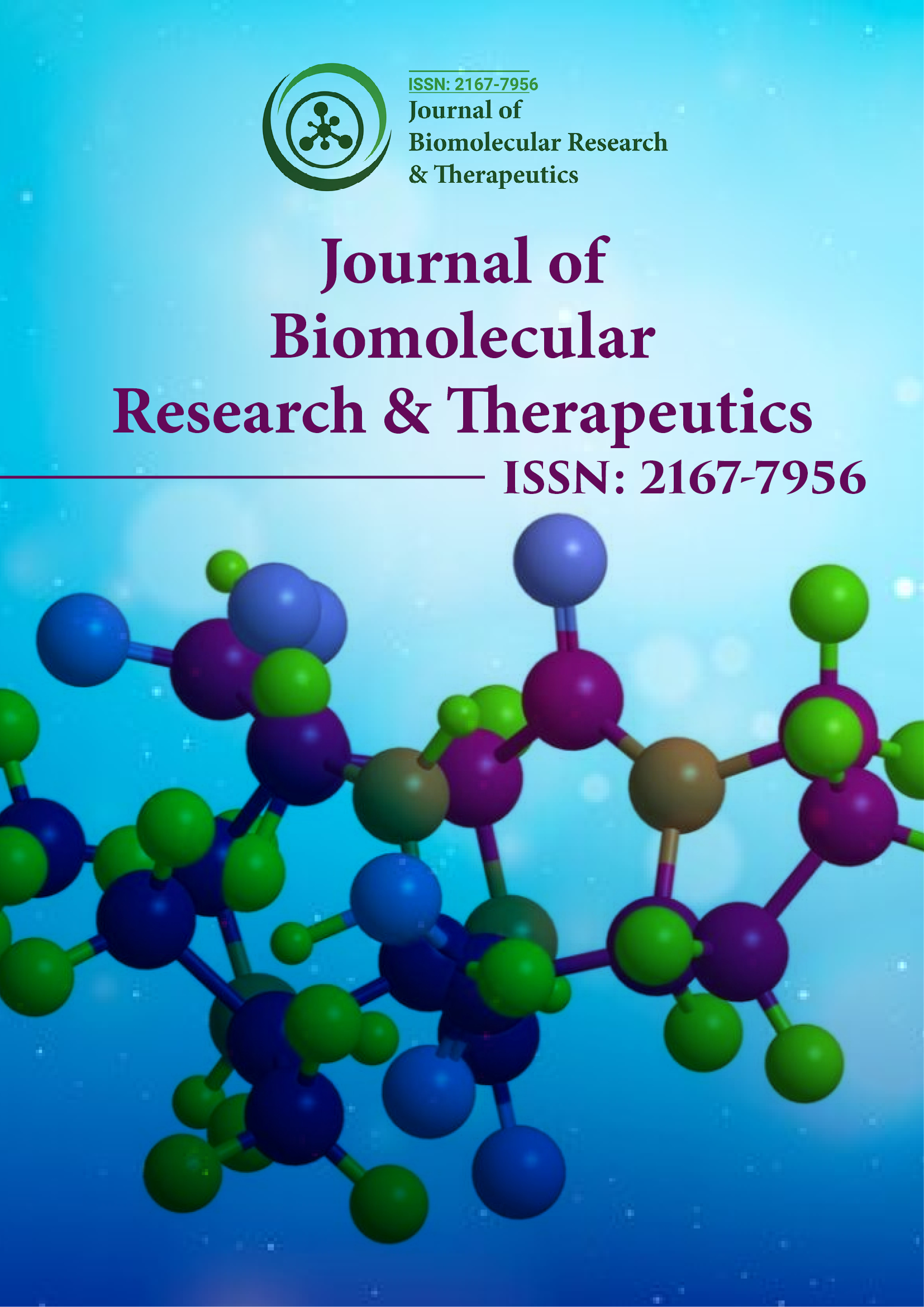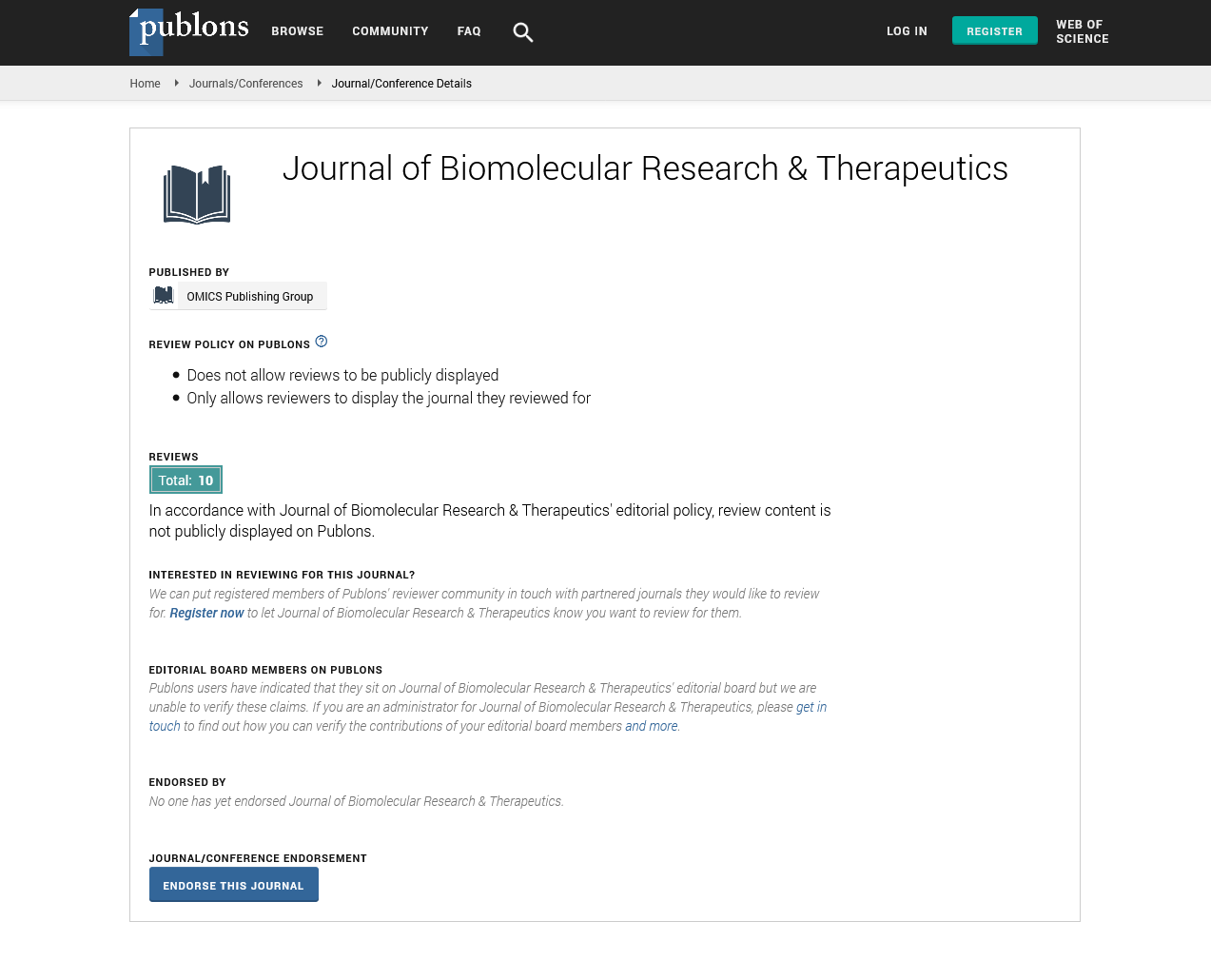Indexed In
- Open J Gate
- Genamics JournalSeek
- ResearchBible
- Electronic Journals Library
- RefSeek
- Hamdard University
- EBSCO A-Z
- OCLC- WorldCat
- SWB online catalog
- Virtual Library of Biology (vifabio)
- Publons
- Euro Pub
- Google Scholar
Useful Links
Share This Page
Journal Flyer

Open Access Journals
- Agri and Aquaculture
- Biochemistry
- Bioinformatics & Systems Biology
- Business & Management
- Chemistry
- Clinical Sciences
- Engineering
- Food & Nutrition
- General Science
- Genetics & Molecular Biology
- Immunology & Microbiology
- Medical Sciences
- Neuroscience & Psychology
- Nursing & Health Care
- Pharmaceutical Sciences
Commentary - (2025) Volume 14, Issue 1
CRISPRâMediated Epigenetic Editing of BRCA1 Promoter Methylation to Restore DNA Repair in Breast Tumors
Hiroshi Nakamura*Received: 27-Jan-2025, Manuscript No. BOM-25-29381; Editor assigned: 29-Jan-2025, Pre QC No. BOM-25-29381; Reviewed: 12-Feb-2025, QC No. BOM-25-29381; Revised: 18-Feb-2025, Manuscript No. BOM-25-29381; Published: 26-Feb-2025, DOI: 10.35248/2167-7956.25.14.428
Description
Breast cancer is one of the leading causes of cancer-related mortality among women worldwide. Among the critical genetic components associated with breast tumorigenesis is the BRCA1 gene, a well-known tumor suppressor involved in the maintenance of genomic stability through its role in the Homologous Recombination (HR) DNA repair pathway. While germline mutations in BRCA1 are commonly linked with hereditary breast and ovarian cancers, a large proportion of sporadic breast tumors show downregulation of BRCA1 expression, not due to genetic mutation, but rather epigenetic silencing via hypermethylation of its promoter region. This epigenetic modification prevents the transcription of BRCA1, compromising the cell’s ability to efficiently repair DNA double-strand breaks and thereby promoting genome instability and cancer progression.
In this study, we investigated a novel therapeutic approach using CRISPR-dCas9-based epigenetic editing to target and reverse aberrant methylation at the BRCA1 promoter in breast cancer cells. The CRISPR-dCas9 system we employed utilized a catalytically inactive Cas9 protein (dCas9) fused to the TET1 catalytic domain, an enzyme that catalyzes the oxidation of 5-methylcytosine to 5-hydroxymethylcytosine an initial and reversible step in DNA demethylation. By designing guide RNAs (sgRNAs) that specifically bind to CpG-rich regions in the BRCA1 promoter, we directed the dCas9-TET1 fusion protein to these silenced regions with high specificity, aiming to restore endogenous BRCA1 expression without altering the underlying DNA sequence.
Our experiments focused on breast cancer cell lines such as MDA-MB-231 and HCC1937, both of which exhibit BRCA1 silencing due to promoter hypermethylation. Following transfection with the CRISPR-dCas9-TET1 construct and appropriate sgRNAs, we observed significant demethylation at targeted CpG sites, as measured by bisulfite sequencing and methylation-specific PCR. This site-specific demethylation was accompanied by a notable upregulation of BRCA1 mRNA and protein expression, confirmed through quantitative PCR and Western blot analysis, respectively.
Functionally, restoration of BRCA1 expression reactivated the homologous recombination DNA repair pathway. This was evidenced by increased RAD51 foci formation after DNA damage induction, a marker of HR activity. Furthermore, DNA repair efficiency was assessed using a DR-GFP reporter assay, where treated cells showed a twofold increase in HR-mediated repair events compared to controls. Notably, the reactivated cells exhibited reduced sensitivity to PARP inhibitors, such as olaparib, which are typically lethal to BRCA-deficient tumors. This shift in drug response further supported the restoration of functional BRCA1 protein.
We also observed broader cellular changes associated with the reactivation of BRCA1. Treated cells displayed cell cycle arrest at the G2/M phase, likely due to the activation of DNA damage checkpoints. Clonogenic assays demonstrated a reduction in colony-forming ability, suggesting that the re-expression of BRCA1 suppressed the proliferative and tumorigenic potential of the cancer cells. Importantly, we performed whole-genome methylation profiling to assess the specificity of our epigenetic editing and found minimal off-target effects, validating the safety and precision of the CRISPR-dCas9-TET1 system.
To evaluate the in vivo relevance of our approach, we used orthotopic xenograft models in immunocompromised mice. BRCA1-silenced cells were treated in vivo with the CRISPR-demethylation system and subsequently implanted into the mammary fat pads of mice. Tumor growth was significantly delayed in the CRISPR-treated group compared to controls. Tumor tissues harvested at the end of the study showed restored BRCA1 protein expression, enhanced markers of DNA repair and lower proliferative indices, as evidenced by Ki-67 staining.
What makes this strategy particularly promising is its epigenetic specificity and reversibility. Unlike traditional gene editing, which causes permanent changes to the genome, CRISPR-based epigenetic editing modifies gene expression through chromatin remodeling, offering a safer and more flexible tool for therapeutic intervention. This also allows the potential for temporally controlled gene reactivation in clinical settings, limiting unwanted long-term effects.
In conclusion, our findings demonstrate that CRISPR-mediated epigenetic editing using dCas9-TET1 fusion proteins can effectively demethylate the BRCA1 promoter, restore gene expression and reactivate DNA repair pathways in BRCA1-silenced breast cancer models. This approach offers a novel and non-mutagenic therapeutic avenue for targeting epigenetically silenced tumor suppressor genes. As precision medicine continues to evolve, such epigenetic editing strategies may complement existing treatments, especially for patients with non-mutational BRCA1 suppression, paving the way for personalized and reversible gene therapy in oncology.
Citation: Nakamura H (2025) CRISPR?Mediated Epigenetic Editing of BRCA1 Promoter Methylation to Restore DNA Repair in Breast Tumors. J Biol Res Ther. 14:428.
Copyright: © 2025 Nakamura H. This is an open access article distributed under the terms of the Creative Commons Attribution License, which permits unrestricted use, distribution AND reproduction in any medium, provided the original author and source are credited.

